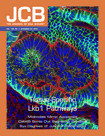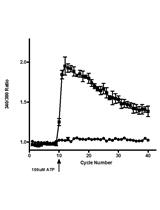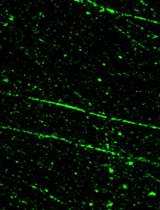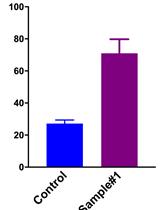- EN - English
- CN - 中文
Homologous Recombination Assay
同源重组分析
发布: 2013年09月20日第3卷第18期 DOI: 10.21769/BioProtoc.914 浏览次数: 19458
Abstract
Repair of double strand break by homologous recombination was examined using U2OS cells or RG37 cells harbouring specific substrate developed by Puget et al. (2005) and Dumay et al. (2006), respectively, to measure the repair of DNA double strand breaks by homologous recombination. The substrate is composed of two inactive copies of the GFP gene. The upstream copy is inactive due to the absence of promoter, the downstream copy present a promoter but is inactivated by the insertion of the sequence coding for the recognition site of the I-SceI enzyme. The substrate is stably expressed in cells after its insertion in the genome and present as a unique copy. The unique DNA double strand break is then induced by the expression of the I-SceI enzyme after cell transfection with a plasmid coding for the I-SceI enzyme.
Keywords: DNA double strand break repair (DNA双链断裂修复)Materials and Reagents
- U2OS or RG37 cell lines
Note: U2OS are osteosarcoma cells with active p53 pathway, RG37 are SV40-immortalized human fibroblasts with inactive p53 pathway. There are cells harbouring the substrate designed to measure Homology Directed repair. However, any cell line in which the HDR substrate has been inserted can be used.
- Culture medium (serum-free medium)
- siRNA for gene of interest (for example rad51, its depletion decreases the efficiency of repair of a DNA DSB by homologous recombination)
- Plasmid pcDNA3myc-NLS-I-SceI (coding for I-SceI created by Puget et al. (2005))
- INTERFERin Transfection Reagent (Ozyme, catalog number: POL409-10 )
- JetPEI Transfection Reagent (Ozyme, catalog number: POL101-10 )
- Trypsin
- Glycerol
- SDS
- Beta-mercaptoethanol
- Bromophenol blue
- Laemmli buffer (see Recipes)
- Phosphate Buffered Saline (PBS) (see Recipes)
Equipment
- 35 mm tissue culture plate
- Tissue culture set up (e.g. 37 °C, 5% CO2 incubator)
- Flow cytometer
- Western blotting apparatus
Procedure
文章信息
版权信息
© 2013 The Authors; exclusive licensee Bio-protocol LLC.
如何引用
Readers should cite both the Bio-protocol article and the original research article where this protocol was used:
- Canitrot, Y. and Trouche, D. (2013). Homologous Recombination Assay . Bio-protocol 3(18): e914. DOI: 10.21769/BioProtoc.914.
-
Courilleau, C., Chailleux, C., Jauneau, A., Grimal, F., Briois, S., Boutet-Robinet, E., Boudsocq, F., Trouche, D. and Canitrot, Y. (2012). The chromatin remodeler p400 ATPase facilitates Rad51-mediated repair of DNA double-strand breaks. J Cell Biol 199(7): 1067-1081.
分类
癌症生物学 > 通用技术 > 细胞生物学试验 > 新陈代谢
癌症生物学 > 基因组不稳定性及突变 > 生物化学试验 > DNA结构和改变
细胞生物学 > 基于细胞的分析方法 > 流式细胞术
您对这篇实验方法有问题吗?
在此处发布您的问题,我们将邀请本文作者来回答。同时,我们会将您的问题发布到Bio-protocol Exchange,以便寻求社区成员的帮助。
Share
Bluesky
X
Copy link














